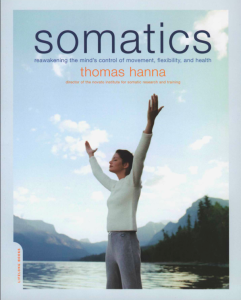Today I stumbled upon a TED talk on influence of body activity (movement and posture) on mental states and emotions
It’s an interesting talk and compelling topic for me as Tom and I have been exploring this connection between body, mind and breath for quite some time. In the talk, Tal Shafir explains in simple terms some findings of her research: just like the brain uses information of physiological change in the body like lowering glucose levels to elicit feeling of hunger, information about posture, position and angles of joints and contraction of muscles is similarly interpreted by brain to produce neural or endocrine response. Seemingly put, the brain interprets information on the posture or physical activity and responds to it by generating what can be simplistically described as appropriate feeling or emotion. So not only our emotional state affects our posture (like slouched posture characteristic for depression), but the relation can be flipped over: our posture and movement affect our emotional state.
This is what I have been teaching for a long time in our yoga classes. For instance, very popular in yoga classes “chest-opening” sequences produce the feeling of lightness and well-being, gently activate parasympathetic nervous system, providing more energy and awareness.
Youtube comments under that TED talk included recommendation of some useful book on the topic of achieving desired mental states through body manipulation. The book is titled “The Body Keeps the Score: Brain, Mind and Body in the Healing of Trauma”. So I went to check the book on Amazon, and thus fell into the rabbit hole of book browsing which left me with a few excellent books on my laptop: the above-mentioned book by Bessel van der Kolk, “Somatics” by Thomas Hanna and “Sensorimotor Psychotherapy” by Pat Ogden. While I don’t work with traumatic patients per se, the insights in these sources on connection of our psychological world, brain function and mind is a very interesting sphere to me which I have been exploring in my own practice of yoga and meditation.
At the moment I’m devouring Thomas Hanna’s Somatics. Especially interesting and empowering are Somatic approaches to treating chronic pains and physical disabilities through educating people to regain sensory-motor control over their bodies. What Hanna wants us to understand is that human beings are not just mechanical dolls with anatomical structures performing defined functions. We are self-regulating systems, equipped with internal sensory and feedback instruments, and we need to learn to use them to live a healthy life.
“The reason that physiology and medicine have failed to perceive the myths behind aging is that they have failed to recognize the fundamental fact that all human beings are self-aware, self-sensing, and self-moving: They are self-responsible somas. The somatic viewpoint recognizes not only that human beings are bodily beings who can become victims of physical and organic forces, but also that they are equally somatic beings who can change themselves. Humans can learn to perceive their internal functions and improve their control of their somatic functions.”
So our role as instructors or movement educators is not to “cure” people but teach people to cure themselves by listening to their bodies and understanding what is going on inside. So again, it all starts with self-observation.
It was a good useful find for my day which gives even more motivation to go do some yoga poses to see what is going on inside and how my body feels today.
Resources:
Bessel van del Kolk “The Body Keeps the Score: Brain, Mind, and Body in the Healing of Trauma”
Pat Ogden & Janina “Fisher Sensorimotor Psychotherapy: Interventions for Trauma and Attachment”
Thomas Hanna “Somatics: Reawakening The Mind’s Control Of Movement, Flexibility, And Health”

